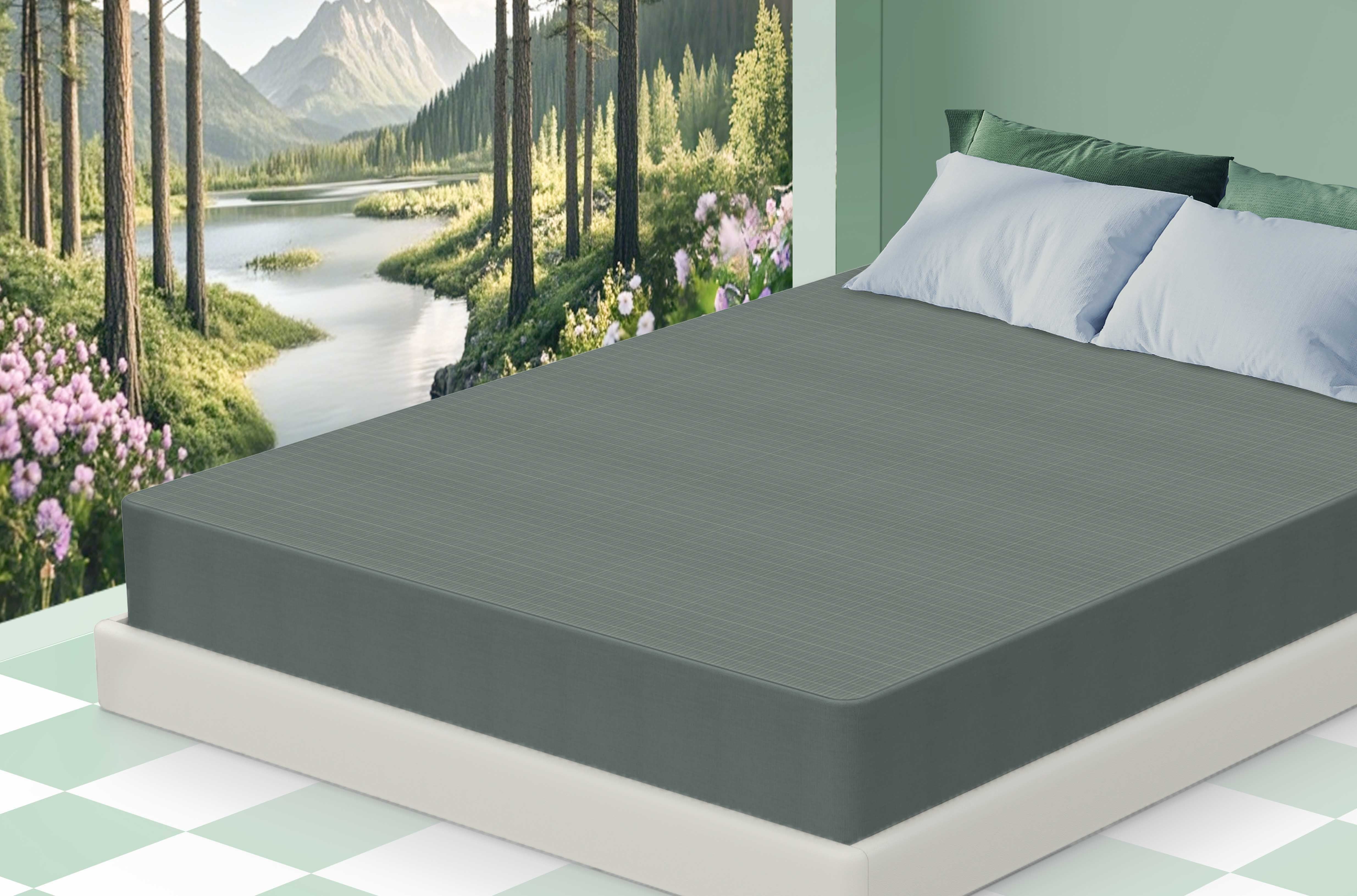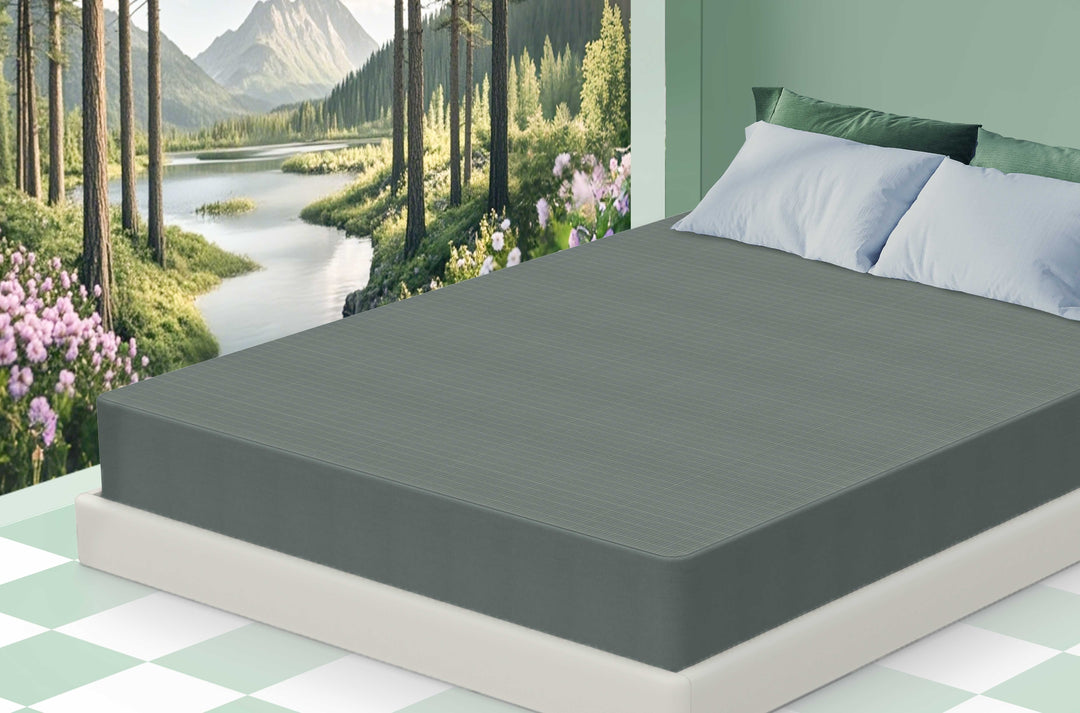Grounding Therapy 101: A Beginner's Guide to Finding Peace
Feeling stressed? Overwhelmed? Like you're constantly on edge? You're not alone. Millions of people grapple with these feelings daily. But what if there was a way to find your center, to feel grounded amidst the chaos?
That's where grounding therapy comes in. It's a simple yet powerful way to reconnect with yourself and the present moment. In this beginner's guide, we'll cover everything you need to know about grounding therapy.
What is Grounding Therapy?
Grounding therapy is about focusing on the present moment to reduce anxiety. The idea is to shift your focus from racing thoughts to your present-moment experience. Sounds easy, right? Well, it is – and it isn't. The key is to engage your senses, to truly connect with the world around you. Whether it's feeling the cool grass beneath your bare feet or noticing the subtle scent of rain in the air, grounding anchors you to the here and now.
But how does this help with anxiety and stress, you ask?
Think of your emotions as waves. When you're caught up in a storm of anxiety, those waves can feel overwhelming. Grounding is like dropping an anchor – it steadies you, helping you ride out the storm with more ease.
The coolest part?
Grounding is not just some new-age trend; it's backed by science. Studies have shown it can reduce stress hormones, improve sleep, and even boost your mood. And the best part is, anyone can do it – no special skills required.
The Science Behind Grounding Therapy
So, what's the deal with grounding? Is it just a bunch of hocus-pocus, or is there some real science backing it up?
Get this: Research suggests that grounding can actually change your body's physiology. When you connect with the Earth (either directly or through special grounding tools), you absorb negatively charged electrons. These electrons are like little ninjas that neutralize harmful free radicals in your body, reducing inflammation and promoting healing. Pretty cool, huh?
But wait, there's more. Grounding has also been shown to:
-
Chill Out Your Nervous System: Ever heard of the "fight-or-flight" response? It's that jolt of adrenaline you get when you're stressed. Grounding helps to dial it back, activating your body's relaxation response instead.
-
Balance Your Cortisol Levels: Cortisol is your body's main stress hormone. When it's out of whack, it can wreak havoc on your sleep, mood, and overall health. Grounding helps to regulate cortisol, so you can finally catch those Zzz's and wake up feeling refreshed.
-
Improve Heart Health: Studies have even found that grounding can thin your blood, making it less sticky and reducing the risk of heart disease. Who knew getting grounded could be so good for your ticker?
The bottom line? Grounding is not just about feeling good at the moment (although that's a pretty awesome perk). It's about tapping into the Earth's natural healing power to improve your health from the inside out.
The Physics and Psychology Behind Grounding
Ever wonder how grounding actually works? It's not magic, but it's pretty darn cool when you understand the science behind it. Let's break it down:
The Physics of Grounding:
Think of the Earth as a giant battery, constantly emitting negative electrons. These electrons are like tiny warriors, ready to neutralize harmful free radicals in our bodies. When we make direct contact with the Earth (like walking barefoot), we essentially "plug in" to this natural energy source.

Source: P. Reid/Univ. of Edinburgh
This connection allows our bodies to absorb these negatively charged electrons, which can have a profound impact on our physical health. It's like hitting the reset button on our electrical system, helping to reduce inflammation, improve blood flow, and even regulate our sleep cycles.
The Psychology of Grounding:
But grounding isn't just about physics – there's a powerful psychological component at play as well. When we're stressed or anxious, our minds tend to race, jumping from one worry to the next. Grounding helps to anchor us in the present moment, shifting our focus from our thoughts to our physical sensations.
By engaging our senses – the feeling of the earth beneath our feet, the sound of the wind rustling through the leaves, the smell of fresh air – we interrupt the cycle of rumination and worry. This allows our nervous system to relax, reducing stress hormones and promoting a sense of calm.
The Dynamic Duo:
In essence, grounding works on two levels:
-
Physical: By absorbing negatively charged electrons, it helps to reduce inflammation and improve our overall health.
-
Mental: By anchoring us in the present moment, it reduces stress and anxiety, promoting a more peaceful state of mind.
Together, these two mechanisms create a powerful synergy that can have a profound impact on our well-being. It's like giving our bodies and minds a double dose of TLC, all thanks to the Earth's natural energy.
5 Senses of Grounding Therapy
Ready to put grounding into practice? One of the easiest and most effective ways to do so is to tap into your five senses.
It's like giving your attention a mini-vacation from all the mental chatter and focusing on what's happening right now.
Here's the lowdown on how to engage each of your senses for a quick grounding boost:
- Sight: Look around and really see the details of your surroundings. Notice the way the sunlight filters through the leaves, the intricate patterns on a flower petal, or the vibrant colors of a painting.

- Sound: Tune into the soundscape around you. Listen to the birds chirping, the wind rustling through the trees, or the hum of the refrigerator. Pay attention to the subtle variations in pitch and volume.

- Smell: Inhale deeply and notice the scents that surround you. It could be the smell of freshly brewed coffee, the earthy aroma of soil, or the clean scent of laundry detergent.

- Taste: Pay attention to the flavors in your mouth. Take a sip of water and notice how it feels on your tongue. If you're eating, savor each bite and appreciate the different tastes and textures.

- Touch: Feel the sensations on your skin. The coolness of a stone, the softness of a blanket, or the warmth of sunlight on your face. Notice the textures of different objects as you touch them.

You don't have to do all five senses at once. If you're short on time, just pick one or two and focus on those for a few minutes. You'll be amazed at how quickly this simple practice can bring you back to the present moment and calm your mind.
Grounding Therapy's Impressive Benefits
Okay, so grounding sounds pretty cool, but what's the real payoff? Brace yourself, because the list of potential benefits is surprisingly long. Let's take a look at some of the most noteworthy perks:
-
Stress Less, Smile More: Grounding is like a chill pill for your nervous system. By activating your relaxation response, it helps to lower stress hormones and promote a sense of calm. Say goodbye to those racing thoughts and hello to a more peaceful state of mind.
-
Sleep Like a Baby: Tossing and turning all night? Grounding might be just what the sleep doctor ordered. Studies have shown it can improve sleep quality, help you fall asleep faster, and even reduce insomnia.
-
Mood Booster: Feeling down in the dumps? Grounding can help lift your spirits. By regulating cortisol and reducing inflammation, it can improve your mood and leave you feeling more positive and energized.
-
Pain Relief: Chronic pain got you down? Grounding might offer some relief. Some studies suggest it can reduce inflammation and pain levels, especially for conditions like arthritis and chronic fatigue syndrome.
-
A Healthier Heart: Want to keep your ticker in tip-top shape? Grounding can help by improving facial blood flow regulation and thinning your blood viscosity, which reduces the risk of heart disease and blood pressure issues (because hypertension improves blood pressure).
-
Faster Wound Healing: Whether you're recovering from an injury (known as delayed onset muscle soreness) or simply dealing with everyday wear and tear, grounding the human body can help you heal faster. By reducing inflammation and improving circulation, it creates an optimal environment for tissue repair.
Grounding isn't just a quick fix for stress – it's a holistic approach to well-being that can benefit your mind, body, and spirit. So why not give it a try and see how it can transform your life?
Top Grounding Techniques
Alright, let's get practical. How do you actually do grounding therapy? The good news is, there are tons of different techniques to choose from, so you can find what works best for you. Here's a quick rundown of some popular options:
Outdoor Grounding
-
Barefoot Walking: Kick off your shoes and socks and let your feet connect with the earth. Walk on grass, sand, or even dirt. Focus on the sensation of the ground beneath your feet and the feeling of the air on your skin.
-
Gardening: Get your hands dirty. Planting, weeding, or simply digging in the soil can be incredibly grounding. Notice the texture of the earth, the smell of the plants, and the warmth of the sun on your back.
-
Forest Bathing (Shinrin-Yoku): Immerse yourself in nature by taking a leisurely walk through a forest or park. Pay attention to the sights, sounds, and smells around you. Let the tranquility of nature wash over you.

Indoor Grounding
-
Deep Breathing: Find a comfortable position and take slow, deep breaths. Focus on the rise and fall of your belly as you inhale and exhale. Count your breaths or repeat a calming word or phrase with each inhale and exhale.
-
Mindful Eating: Slow down and savor your food. Notice the colors, textures, and flavors. Engage all your senses as you eat.
-
Body Scan Meditation: Close your eyes and bring your attention to each part of your body, starting with your toes and moving up to your head. Notice any sensations you feel, whether it's tingling, warmth, or coolness.

Grounding Tools
Want to take your practice to the next level? Check out these grounding tools:
-
Grounding Sheets: These are made with conductive materials that connect you to the Earth's energy while you sleep or relax. Homlyns grounding sheets are made from high-quality, breathable cotton woven with pure silver fibers—providing both comfort and conductivity.
-
Grounding Mats: Similar to sheets and blankets, but designed to be used while you work at a desk or computer.
-
Grounding Socks and Bands: These wearable options are great for on-the-go grounding.
There's no right or wrong way to do grounding. Experiment with different techniques and find what feels best for you. The most important thing is to be consistent with your practice so you can reap the full benefits.
How Long and How Often to Do Grounding Therapy?
You might be wondering, "How long do I need to do this grounding stuff to actually feel a difference?" Well, the good news is, you don't need to spend hours meditating in a forest to reap the benefits (though that certainly doesn't sound bad).
Here's the general consensus:
-
Short & Sweet: Even a few minutes of grounding can make a noticeable difference. If you're short on time, try a 5-10 minute barefoot walk or a quick body scan meditation.
-
Aim for Consistency: Rather than one marathon grounding session, try to incorporate shorter practices throughout your day. This could be a few minutes of deep breathing in the morning, a mindful lunch break, or a barefoot stroll in the evening.
-
Listen to Your Body: The ideal duration and frequency of grounding can vary from person to person. Pay attention to how you feel before, during, and after your practice. Adjust your routine based on what works best for you.
The key is to make grounding human subjects a regular part of your life, like brushing your teeth or taking a shower. Over time, you'll likely notice that you feel calmer, more centered, and better equipped to handle whatever life throws your way.
Grounding vs. Earthing : Are They the Same Thing?
You might have heard the terms "grounding" and "earthing" used interchangeably. So, are they the same thing, or is there a difference?
In a nutshell, they're pretty much the same idea. Both refer to the practice (grounding and earthing) of connecting with the Earth's natural energy to promote physical and mental well-being. Some folks prefer the term "earthing" because it emphasizes the physical connection with the Earth, while others use "grounding" to encompass both the physical and mental aspects of the practice.
How Does it Work?
The theory behind grounding and earthing is that the Earth's surface has a negative charge. When you come into direct contact with the Earth (like walking barefoot on the grass), your body absorbs these negative electrons. These earth's surface electrons are thought to act as antioxidants, neutralizing harmful free radicals in your body and reducing inflammation.
Grounding vs. Mental Grounding
It's important to note that grounding or earthing (the physical practice) is different from the mental health technique called "grounding." While both aim to reduce stress and anxiety, mental grounding focuses on techniques that bring you back to the present moment through your senses, thoughts, and feelings.
The Verdict?
Whether you call it grounding or earthing, the important thing is that it's a simple, natural way to potentially improve your health and well-being. So kick off your shoes, step outside, and let the Earth do its thing.
Who Should Think Twice Before Grounding?
While grounding therapy is generally safe and has a ton of potential benefits, it's not for everyone. There are a few groups of people who should consult their doctor before diving in:
-
Pregnant Women: While there's no definitive research on grounding patches during pregnancy, it's always best to err on the side of caution and get the green light from your doctor.
-
Folks on Blood Thinners: Grounding has been shown to thin the blood, so if you're already taking blood-thinning medication, it's important to talk to your doctor to avoid any potential complications.
-
Those with Medical Conditions: If you have any underlying health issues, especially related to your heart or autonomic nervous system, it's crucial to chat with your healthcare provider before trying grounding.
Feeling Tingles?
Some people experience a tingling sensation when they first start grounding. This is usually nothing to worry about and is simply your body adjusting to the Earth's energy. However, if you experience any discomfort or unusual symptoms, stop and consult your doctor.
Grounding is a powerful tool for well-being, but it's important to be mindful of your individual health circumstances. When in doubt, always talk to your doctor before starting any new health practice.
Potential Side Effects to Keep in Mind
Alright, let's get real. Grounding isn't all sunshine and rainbows. While it's generally safe and well-tolerated, there are a few potential downsides to be aware of:
-
The "Healing Crisis": Some folks report feeling a bit under the weather when they first start grounding. Think flu-like symptoms, headaches, or fatigue. This is sometimes referred to as a "healing crisis," and it's thought to be a sign that your body is detoxing and adjusting to the influx of electrons. If you experience these symptoms, don't freak out – just ease into your practice and give your body time to adjust.
-
Tingling Sensations: It's not uncommon to feel a tingling or buzzing sensation when you're grounded, especially if you're using a grounding mat or other conductive tool. This is usually harmless and simply a sign that the energy is flowing. However, if it feels uncomfortable or intense, take a break and try again later.
-
Medication Interactions: If you're taking any medications, especially blood thinners, it's crucial to talk to your doctor before starting grounding. Grounding can affect how your body processes medication, so it's important to be aware of any potential interactions.
-
Environmental Hazards: If you're grounding outdoors, be mindful of your surroundings. Avoid areas with broken glass, sharp objects, or potential allergens. And of course, if there's a thunderstorm brewing, head indoors.
While the potential side effects of grounding are generally mild and temporary, it's always better to be safe than sorry. Listen to your body, start slowly, and talk to your doctor if you have any concerns.
Ready to Get Grounded? Final Thoughts
It's a simple yet powerful tool that can help you navigate life's ups and downs with more ease and grace. So go ahead, kick off your shoes, breathe deep, and reconnect with the present moment.
Key takeaways:
-
Grounding therapy is a simple yet powerful way to reduce stress, improve sleep, and boost your overall well-being.
-
It works by connecting your body with the Earth's natural energy, which helps to reduce inflammation and promote relaxation.
-
There are tons of different grounding techniques to choose from, both indoors and outdoors.
-
Grounding tools like mats and blankets can help you reap the benefits even when you can't be outside.
Feel Good from the Ground Up with Homlyns
At Homlyns, we're all about creating a cozy haven where you can unwind and recharge. And what better way to enhance your relaxation than with a grounding mat or blanket? Our high-quality grounding products are designed to help you tap into the Earth's natural energy, so you can sleep soundly, reduce stress, and feel your best.
💬 Grounding Therapy FAQs
Q1: Do Grounding Mats Really Work?
Can't always kick off your shoes and stroll through the grass? No worries, grounding mats might be your ticket to indoor zen. These mats are designed to mimic the Earth's electrical charge, essentially bringing the outdoors in.
But do they actually work? It's a fair question. While research on grounding mats is still emerging, some studies suggest they can offer similar benefits to direct contact with the Earth:
- Improved Sleep: One study found that using a grounding mat while sleeping improved sleep quality and reduced pain levels. Sounds pretty dreamy, right?
- Chill Out, Cortisol: Another study showed that grounding mats can help regulate cortisol, your body's main stress hormone. Keeping cortisol in check can lead to better sleep, improved mood, and even a healthier heart.
- Beat the Blues: Some folks have reported feeling less stressed and anxious after using grounding mats. While more research is needed, it's definitely a promising sign for those looking for a natural mood booster.
While grounding mats might not be a miracle cure, the research so far is pretty encouraging. If you're looking for a way to reap the benefits of grounding without having to step outside, they're definitely worth considering.
💡 Tips: When choosing a grounding mat, make sure it's made with conductive materials and properly connected to a grounding source (like an outlet).
Q2: Are Grounding Blankets Safe?
Imagine drifting off to sleep wrapped in a cozy blanket that not only keeps you warm but also helps you de-stress and recharge. That's the promise of grounding blankets. But are they safe? Let's take a closer look.
The Good News
For most people, grounding blankets are perfectly safe to use. They're designed with conductive materials that connect to a grounding port on your wall outlet, allowing your body to absorb the Earth's natural energy as you sleep. This can potentially lead to:
- Improved Sleep: Studies suggest that grounding blankets can help regulate your sleep cycle, improve sleep quality, and reduce insomnia.
- Reduced Pain and Inflammation: Some folks report experiencing less pain and inflammation when using grounding blankets, thanks to their potential to reduce free radicals in the body.
- Lower Stress and Anxiety: By promoting relaxation and reducing cortisol levels, grounding blankets may help you feel calmer and more at ease.
A Few Things to Keep in Mind
While grounding blankets are generally safe, there are a few precautions to take:
- Properly Grounded Outlet: Make sure your outlet is properly grounded to avoid any electrical hazards. If you're unsure, consult an electrician.
- Medical Conditions: If you have any underlying health conditions, especially related to your heart or nervous system, talk to your doctor before using a grounding blanket.
- Electromagnetic Fields (EMFs): Some grounding blankets may emit low levels of EMFs. If you're sensitive to EMFs, look for a blanket that's specifically designed to minimize EMF exposure.
Overall, grounding blankets are a safe and potentially beneficial way to incorporate grounding into your sleep routine. Just be sure to follow the instructions carefully, choose a reputable brand, and consult your doctor if you have any concerns.
Reference:
- Chevalier G, Sinatra ST, Oschman JL, Delany RM. Earthing (grounding) the human body reduces blood viscosity-a major factor in cardiovascular disease (https://www.ncbi.nlm.nih.gov/pmc/articles/PMC3576907/). J Altern Complement Med. 2013;19(2):102-110. doi:10.1089/acm.2011.0820
- Ghaly M, Teplitz D. The biologic effects of grounding the human body during sleep as measured by cortisol levels and subjective reporting of sleep, pain, and stress (https://pubmed.ncbi.nlm.nih.gov/15650465/). J Altern Complement Med. 2004;10(5):767-776. doi:10.1089/acm.2004.10.767
- Oschman JL, Chevalier G, Brown R. The effects of grounding (earthing) on inflammation, the immune response, wound healing, and prevention and treatment of chronic inflammatory and autoimmune diseases (https://www.ncbi.nlm.nih.gov/pmc/articles/PMC4378297/). J Inflamm Res. 2015;8:83-96. Published 2015 Mar 24. doi:10.2147/JIR.S69656
- Park HJ, Jeong W, Yu HJ, et al. The Effect of Earthing Mat on Stress-Induced Anxiety-like Behavior and Neuroendocrine Changes in the Rat (https://www.ncbi.nlm.nih.gov/pmc/articles/PMC9855809/). Biomedicines. 2022;11(1):57. Published 2022 Dec 26. doi:10.3390/biomedicines11010057
- Sokal P, Sokal K. The neuromodulative role of earthing. Med Hypotheses (https://pubmed.ncbi.nlm.nih.gov/21856083/). 2011;77(5):824-826. doi:10.1016/j.mehy.2011.07.046
















Leave a comment